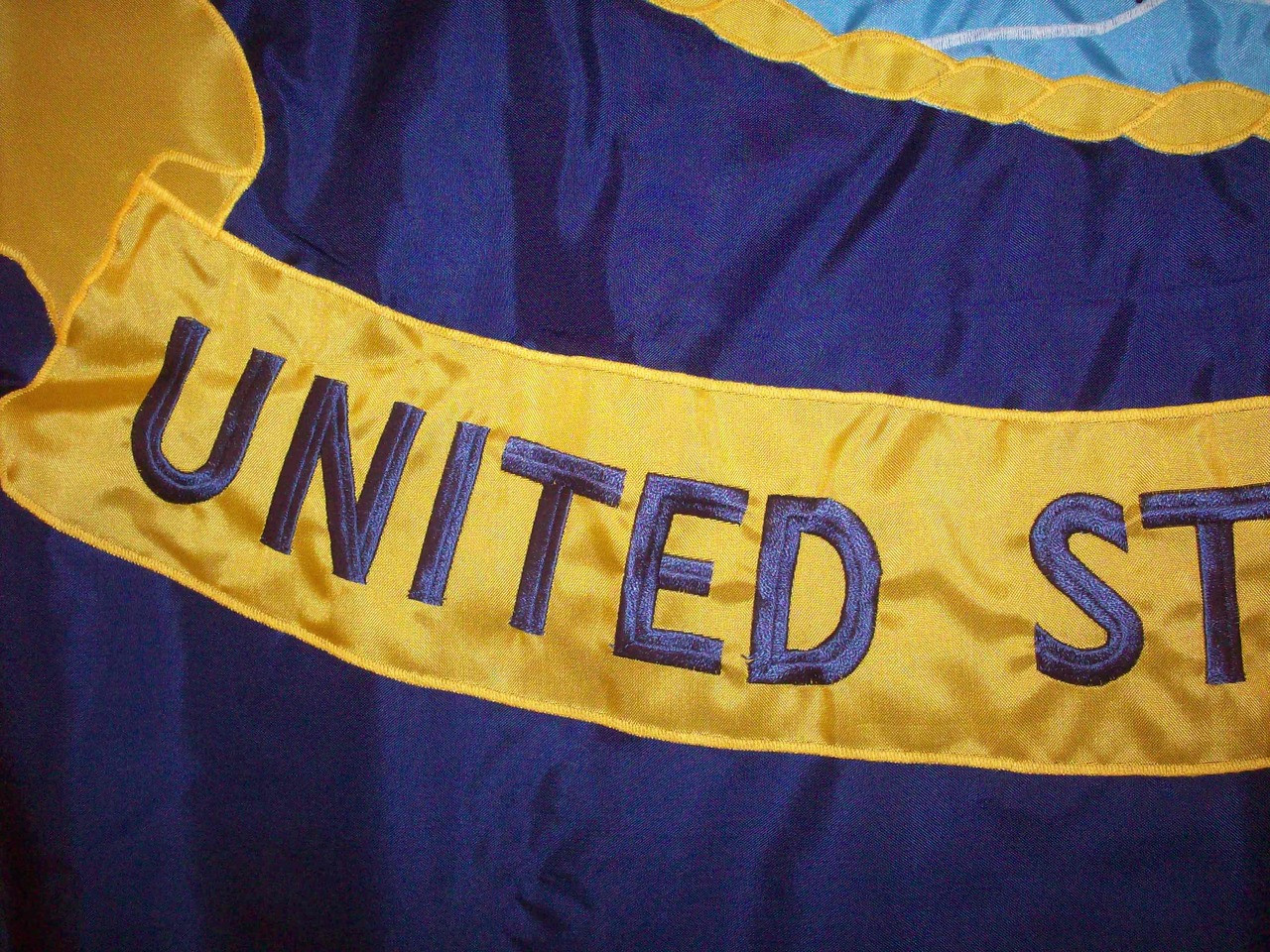Product Description
Navy Nylon Appliqued Flag 4'4" X 5'6" with Pole Hem and Fringe. This flag is beautifully appliqued and sewn to government spec. For indoor and ceremonial use. Please allow up to 4 weeks to sew this flag.
Our Nylon fabric goes by many names; Durawavez, Endura-Nylon, Perm-Nyl, or simply Nylon. Our Heavy-Duty Commercial Grade Dupont Solarmax material with Sunscreen. The best nylon on the market with embroidered stars (appliqued above 8’ x 12’) and sewn stripes! Perfect for flying outdoors, our 200-denier fabric allows for flyability in light breezes and the durable Lock Stitching extends the flags life longer than printed or even chain stitched flags. The quick drying of nylon allows for longer color retention! Typical life of our nylon flags is between 8-10 months before tattering and fading. Our sizes vary between 12” x 18” all the way to a 50’ x 80’!! All flags are Made in the USA!
This Navy Flag features:
- Heavy-weight Dupont nylon military-grade flag fabric specially treated to resist fading.
- Stars are appliqued—separate pieces of fabric—expertly sewn and finished for a superior professional look.
- Made in the U.S.A. Not only are our military flags assembled here, but all the materials that go into making them are domestic.
- Hems are sewn with a double row (4 rows on the fly end) of heavy, strong polyester thread tightly lock-stitched so they won’t unravel and finished with a gold fringe
- Finished with our signature Pole Hem, sewn with a double row of stitching and a strong leather tab near the top end of the flag to secure it to the pole.
The U.S. Navy is the largest and most capable navy in the world! In terms of tonnage of just our active fleet, it is larger than the next navies combined, this includes U.S. allies or partner nations. We have the world’s largest aircraft carrier fleet, with 11 in service and 2 new ones being currently constructed. There are around 370,000 active duty personnel and around 102,000 in the Ready Reserve making the Navy the 3rd largest branch of the military. The U.S. Navy traces its origins to the Continental Navy, which was disbanded shortly after the American Revolutionary War. The U.S. Congress passed the Naval Act of 1794, which called for the construction of six heavy frigates in retaliation to the Barbary pirates from Algiers.
The Navy went through a modernization program during the 1880’s when the first steel hulled warship stimulated the American steel industry. The rapid construction of pre-dreadnoughts, the dreadnoughts brought the U.S. in line with naval powers such as Britain and Germany. During World War I, the Navy spent most of its resources shipping Soldiers and Marines of the American Expeditionary Force and war supplies across the Atlantic through U-boat infested waters. Battleship Division 9 was dispatched to Britain and served in place of the Sixth Battle Squadron of the British Grand Fleet. This gave the British the opportunity to decommission some of the older ships and reuse the crews on smaller vessels. The strength of the United States Navy grew under an ambitious ship building program associated with the Naval Act of 1916.
By the end of World War II, the Navy had grown into a formidable force, adding hundreds of ships to their fleet, including 18 aircraft carriers and 8 battleships. The United States Navy bolstered 70% of the world’s total number and world’s tonnage of naval vessels of 1,000 tons of greater; at the peak the Navy was operating close to 6,800 ships on V-J Day. During World War II, the Navy saw around 4,000,000 Americans enlist.












